#sunk cost
Explore tagged Tumblr posts
Text

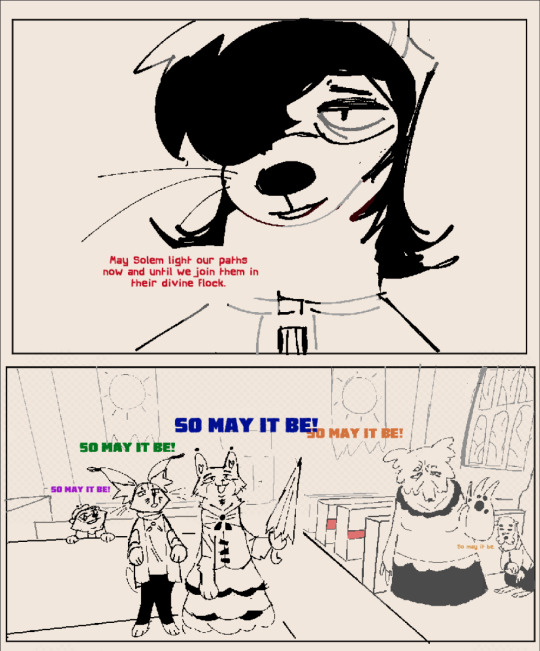

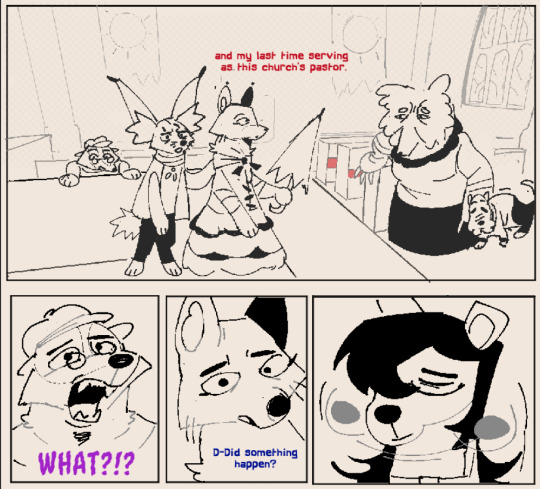

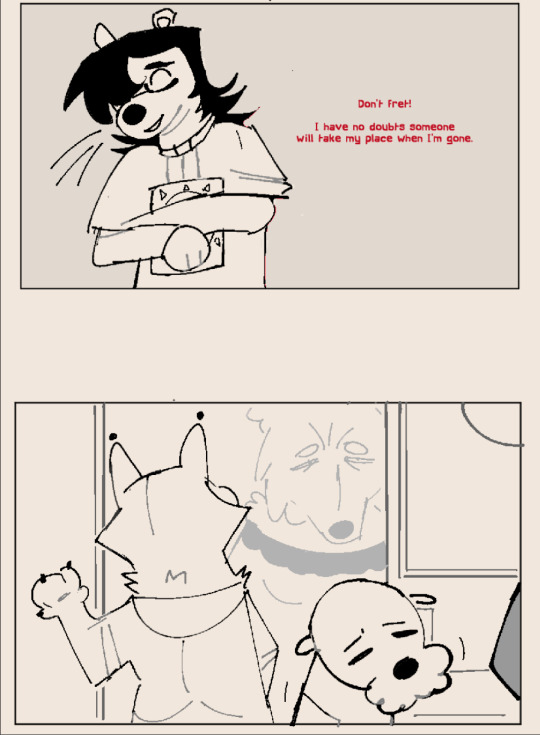
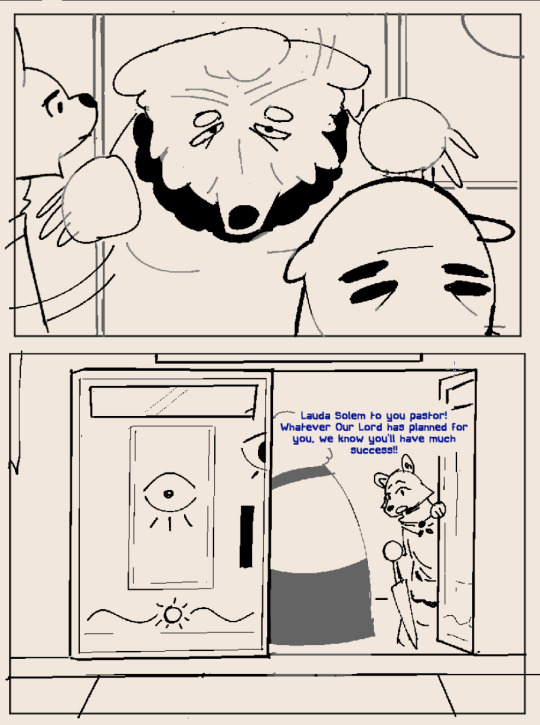



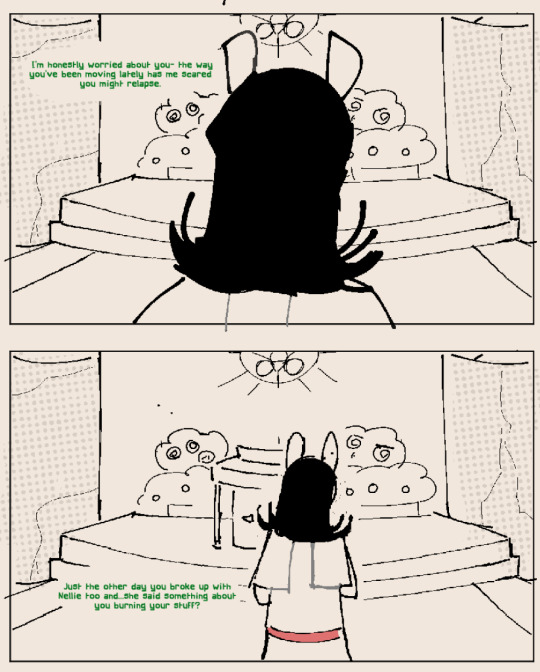
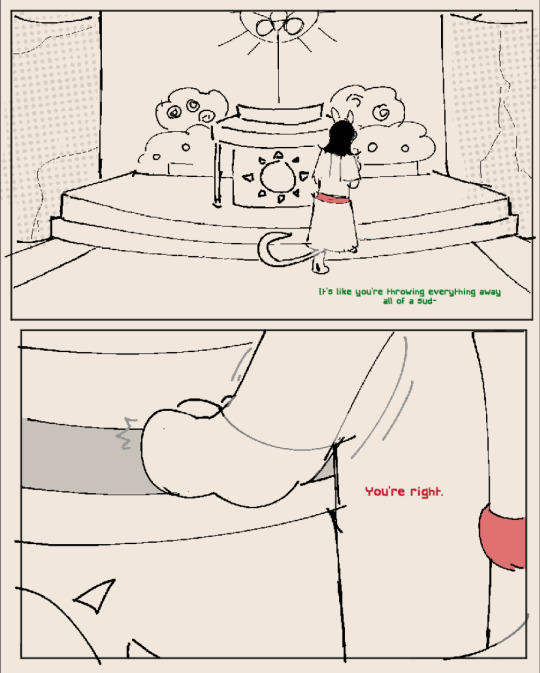




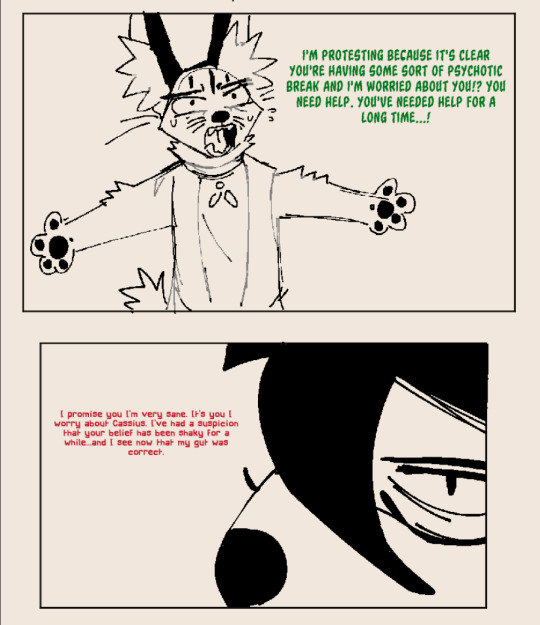

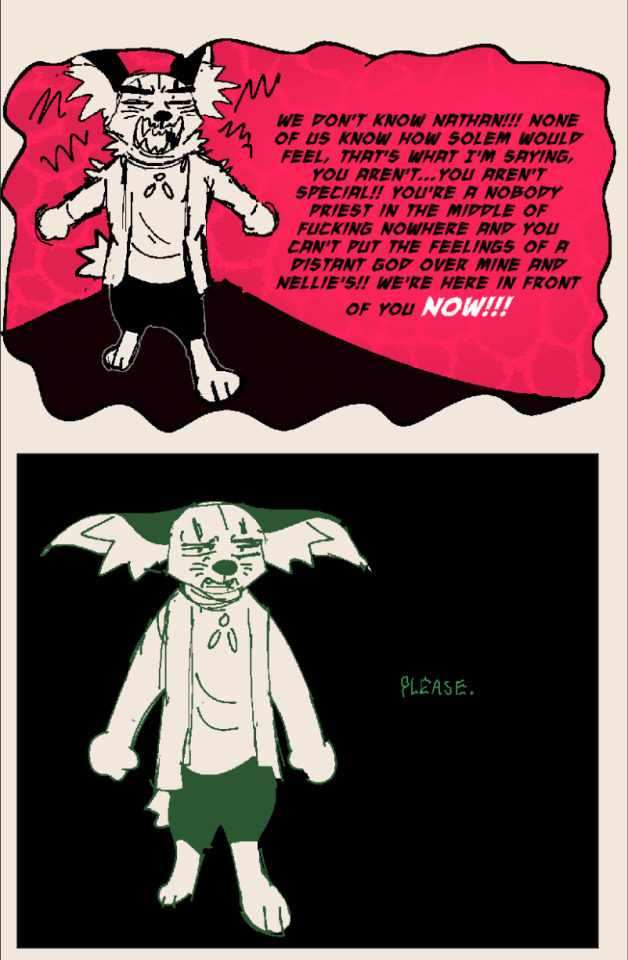








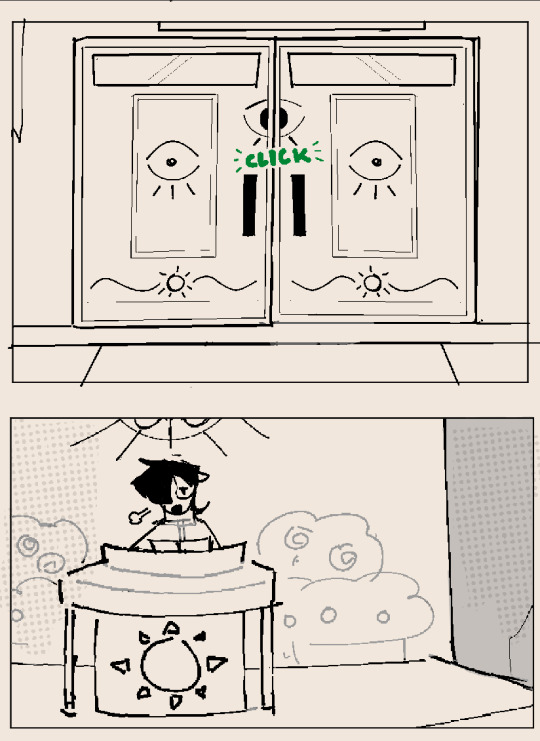


"For Love"
The things we do, am I right?
I wanted to make a comic that touched on Aelius's life shortly before he "died".
56 notes
·
View notes
Note
Hope this doesn’t sound weird as it’s so specific, but the way you write Tom in a situation where the OC is sharing a bed with him is always absolute perfection. The anticipation, his desperation. Your most recent fic has got to be my favourite oneshot Tom Bennet fic I’ve ever read. The way you write Tom is just so realistic and believable that he is actually Tom from the show, not just a character named Tom Bennett. I’m so glad you are still interested in writing for him. 💜
This isn't weird at all! You've made my entire day with this ask; thank you so much <3 Tom is one of my favourites to write for, his "voice" is one of the easiest for me to grasp of all of Ewan's characters. As long as Ewan's acting still inspires my writing, then I'll continue to write stories for his characters. Thank you again, really glad you enjoyed Sunk Cost!

5 notes
·
View notes
Text

Livin' Thing
Black Sheep, Springfield, IL
12/22/2018
3 notes
·
View notes
Text
3 notes
·
View notes
Text
Managerial Accounting and Control – Key Concepts
Financial vs. Managerial Accounting
Financial accounting and managerial accounting serve different purposes.
Users:
Financial accounting produces standardized reports (balance sheet, income statement, cash flows) for external users – investors, creditors, regulators – and follows GAAP/IFRS rules .
In contrast, managerial accounting provides detailed analyses to internal management to aid decisions .
Time focus:
Financial reports are wholly historical (past periods) , whereas managerial accounting uses historical data plus budgets and forecasts to look forward . Precision & Detail: Financial statements aggregate data into broad categories (e.g. total “Cost of Goods Sold”), while managerial reports drill down into products, segments, or activities with granular detail .
Regulation:
Financial accounting is highly regulated for public disclosure; managerial accounting is flexible and not bound by external standards . Common mistakes include treating managerial data as audited (it may involve estimates) or ignoring relevant internal details in financial reports.
Planning, Controlling, and Decision-Making Framework
Managerial accounting is built on three pillars:
Planning,
Controlling,
Decision-making .
In planning, managers set targets and budgets (sales forecasts, production schedules). In controlling, they compare actual performance to these targets and use variance analysis to identify issues. Decision-making uses cost analyses (e.g. break-even, make-or-buy) to choose among alternatives. For example, a sales budget drives production and labor plans; exceeding the sales target might trigger bonuses, while falling short can reduce compensation . Overall, this framework ensures efficient use of resources and aligns operations with strategy. (Common errors include not updating budgets when conditions change or ignoring both quantitative and qualitative decision factors.)
Cost Classifications: Direct vs Indirect; Fixed vs Variable vs Mixed
Costs are classified by traceability and behavior. Direct costs can be traced easily to a product or service (e.g. raw materials in a product, wages of assembly workers) . Indirect costs cannot be traced to one product (e.g. factory rent, electricity, supervisor salaries) and are usually allocated as overhead . By behavior, variable costs change in total with volume (e.g. shipping costs per unit, $1 per unit cups) , while fixed costs stay the same in total across the relevant range (e.g. $3,500 rent per month) . A mixed (semi-variable) cost has both parts (e.g. a utility bill with a fixed base fee plus usage charge) . Within the relevant range, total cost can be modeled as:
Total Cost = Fixed Cost + (Variable Cost per Unit × Number of Units)
Manufacturing vs. Non-manufacturing Costs
In manufacturing firms, manufacturing (product) costs include three categories:
Direct Materials: Raw materials that become part of the finished product (e.g. wood for furniture) .
Direct Labor: Labor costs of workers who physically make the product (e.g. machine operators) .
Manufacturing Overhead: All other factory costs (indirect materials, indirect labor, utilities, depreciation of equipment, factory insurance, etc.).
The sums of these are often grouped: Prime cost = DM + DL , Conversion cost = DL + MOH , and Total manufacturing cost = DM + DL + MOH . Non-manufacturing (period) costs include selling and administrative expenses. For example, marketing/advertising and sales staff salaries are selling costs, while executive pay and office utilities are administrative costs . These are not tied to production.
Product Costs vs. Period Costs
All costs are ultimately either product costs or period costs. Product costs are the manufacturing costs (DM, DL, MOH) that are inventoriable: they are capitalized on the balance sheet as inventory and expensed as Cost of Goods Sold when sold . For example, direct materials and factory overhead on a product become part of inventory. In contrast, period costs are non-manufacturing expenses that are expensed in the period incurred . These include SG&A like office rent, advertising, and CFO salary . In short: if a cost is related to making a product, it’s a product cost; otherwise it’s a period cost . A common error is mislabeling costs (e.g. treating office rent as product cost instead of period).
Managerial Perspectives
Managers use accounting within broader business contexts. Key perspectives include:
Ethics: Managerial accounting depends on trust and integrity. Ethical behavior is “the foundation of managerial accounting” – biased or falsified data render all analysis meaningless . Professional accountants follow codes (IMA/CIMA) that stress honesty, fairness, and responsibility . Always question whether data is complete and reported objectively.
Strategy: Accounting supports strategy by linking numbers to the company’s competitive plan. Strategy is a firm’s “game plan for attracting customers by distinguishing itself from competitors” . Cost reports help choose which products or segments to invest in. For instance, a low-cost producer strategy would emphasize activity-based costing to cut unnecessary overhead, while a differentiation strategy might allocate more to quality metrics.
Enterprise Risk Management (ERM): Managers identify and quantify risks (market, credit, operational) and plan responses. ERM is defined as “a process used by a company to identify its risks and develop responses to them to be assured of meeting its goals” . Relevant costs include potential losses, insurance, or contingency budgets. Accounting data is used to forecast how different risk scenarios affect profits.
Corporate Social Responsibility (CSR): Companies consider social, environmental, and stakeholder impacts. CSR means managers consider “the needs of all stakeholders when making decisions” . For example, waste disposal or carbon emissions may be tracked as part of costs (using full-cost or environmental costing methods). Non-financial metrics (customer satisfaction, community impact) complement financial reports in a CSR perspective.
Process Management: This involves streamlining business processes (like Lean). A business process is “a series of steps followed to carry out some task” . Managerial accounting measures costs and performance at each process step (e.g. cost per production line, cycle time). By analyzing process costs, managers can eliminate bottlenecks. For example, tracking cost per unit by process highlights inefficiencies.
Leadership: Beyond numbers, managerial accountants often advise and lead teams. Leadership skills help interpret data, communicate insights, and motivate employees toward goals. As one teaching note suggests, leadership skills allow managers to unite people and implement the firm’s strategy (e.g. fair compensation systems that reward performance) .
Each perspective guides what and how information is reported. For example, ethical issues remind managers to exclude sunk costs and report honestly; strategic context determines which segments matter most; ERM reminds us to include contingency costs; CSR adds measures beyond profit; process management focuses on continuous cost reduction; and leadership ensures the data drives action.
Cost Behavior Analysis and Relevant Range
Understanding cost behavior is crucial for forecasting. The relevant range is the normal operating span in which our cost assumptions hold . Within this range, fixed costs are fixed (in total) and variable costs scale linearly. For example, if a machine produces up to 1,000 units/day, costs (like depreciation or utilities) can be estimated reliably up to that point; beyond it, new costs (a second machine) would emerge, altering the cost function . Typical mistake: applying a fixed-cost assumption far outside the relevant range (e.g. assuming one factory rent covers 200% capacity).
The high-low method estimates mixed costs using only the highest- and lowest-activity data points . Steps: (1) Identify the periods with highest and lowest activity and note their total costs. (2) Compute the variable cost per unit as:
( Cost_high – Cost_low ) ÷ ( Activity_high – Activity_low )
For example, if maintenance cost was $1,060 at 1,460 units and $932 at 1,100 units, the variable cost/unit = (1,060–932)/(1,460–1,100) = $0.356 . (3) Calculate fixed cost by subtracting total variable cost from one of the totals. Using the high point: $1,060 – (1,460×0.356) = $540 fixed . (4) Write the cost formula: Total Cost = $540 + $0.356 × Units . Note this approximation uses only two points (ignoring the shape between), so it may be rough if data are erratic .
Differential, Opportunity, and Sunk Costs
When making decisions, not all costs are relevant.
Differential (Incremental) Cost: The difference in cost between two alternatives. E.g. if Option A costs $10,000 and B costs $8,000 annually, the differential cost of A vs. B is $2,000 . Similarly, differential revenue is the revenue difference. Decisions are based on comparing differential revenues and costs.
Opportunity Cost: The foregone benefit when one alternative is chosen over another. It isn’t recorded in accounting books but is crucial. For example, quitting a $25,000 job to return to school incurs an opportunity cost of $25,000 (the lost salary) . Every choice has one – e.g. using a machine for product A means losing whatever B it could have made. Managers should include opportunity costs as relevant (e.g. the rental income given up by using a building for production).
Sunk Cost: A cost already incurred and unchangeable by current decisions. For example, a machine bought years ago is now obsolete; its original purchase price cannot be recovered . Sunk costs should be excluded from decision analysis because they remain the same regardless of the choice . A common pitfall is letting sunk costs (like past R&D) influence new decisions; instead, focus on future costs and benefits.
In summary: use differential and opportunity costs in “what-if” analyses (they are relevant), but ignore sunk costs (they are irrelevant) .
Contribution Margin and Income Statement Formats
Contribution Margin (CM) is defined as Sales – Variable Costs .
It represents the amount available to cover fixed costs and contribute to profit. For example, if a product sells for $100 and has $40 of total variable cost (materials, labor, commissions), the contribution margin is $60 per unit . CM can be expressed in total, per unit, or as a ratio (% of sales) . It’s widely used for break-even and target-profit analysis (e.g. Break-even units = Total Fixed Costs ÷ CM per unit).
There are two common income statement formats: Traditional (absorption) and Contribution (variable costing). Both yield the same net income, but differ in presentation .
Traditional Income Statement: Used for external reporting. It first subtracts product (COGS) from sales to get Gross Profit, then subtracts period costs (selling & admin) to get net income. Expenses are grouped as product vs. period costs.
Contribution Income Statement: Used internally for decision-making. It first subtracts all variable costs from sales to get Total Contribution Margin, then subtracts total fixed costs to arrive at net income. Here expenses are classified by behavior (variable vs. fixed) .

Both statements reconcile to the same profit, but the contribution format highlights how volume affects profit. A typical mistake is misallocating fixed costs or failing to separate variable costs when preparing these statements, which can obscure break-even analysis.
#BUS346#Managerial Accounting & Control#Summer2025#accounting basics#cost accounting#mba#mba core#session notes#11 june 2025#financial VS managerial#cost classicication#cost behavior#planning#controlling#decision making#manufacturing costs#high low method#relevant range#sunk cost#opportunity cost#differential cost#erm#csr#leadership#ethics in accounting#accounting#budgeting#cost formulas
0 notes
Text


her ass is not listening
#my art#cassandra cain#stephcass#tim drake#stephanie brown#this looks like shit sorry i was originally not gonna color then started it and then the sunk cost fallacy got my ass sigh#batman#dc#also my first time drawing any bat boy ever
14K notes
·
View notes
Text
This a a reminder to not fall victim to the sunk-cost fallacy. Just because you invested time and energy into something, does not mean you should indefinitely waste more time and energy on it, if you decide it’s not what you want anymore. This goes for anything, from books, to relationships, to jobs, to hobbies, etc.
If it’s not serving you anymore, move on.
103K notes
·
View notes
Text

FACT: 90% OF SUICIDAL PEOPLE KILL THEMSELVES JUST BEFORE THEY HIT IT BIG
KEEP PLAYING
#gravity falls#stanley pines#grunkle stan#sea grunks#sometimes mental health is treating yourself to the sunk cost fallacy#if its stupid and it works it isnt stupid! (;#anyways have this scribble#might post more scribbles later if i can be cajoled
7K notes
·
View notes
Text
the problem with taz balance is you first listen to it as a naive high schooler like "oh, funny dnd podcast made by those mcelroy guys i see in tumblr memes all the time! and they apparently have gay characters too! let me check this out! haha his name is taco that's so random XD" and nobody could have warned you that a decade later you'll still periodically think about lucretia and her martyr complex and be stricken with the urge to start gnawing your own limbs off
5K notes
·
View notes
Text












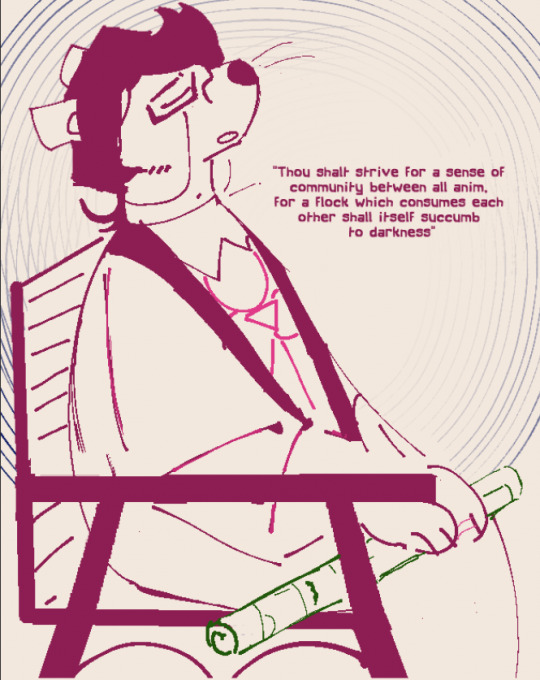
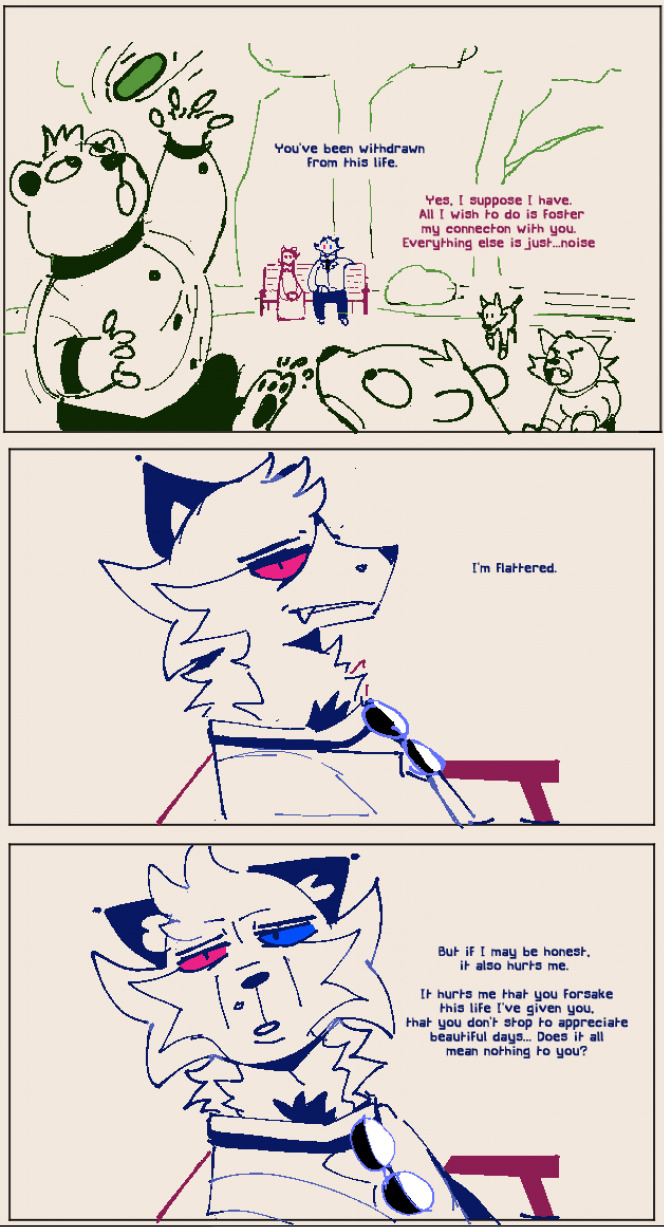


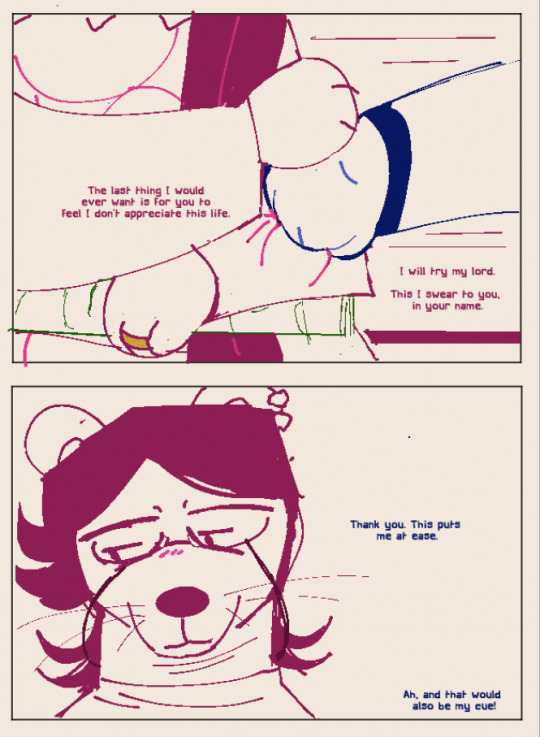


In Your Name
No artist likes it when their art goes unappreciated by those they love v_v
66 notes
·
View notes
Note
Coming tomorrow!
Loved the response to the Tom Bennett ask.
Now I must request a story of Tommy screaming, crying and throwing up when pursued by a more dominant/cheeky/ forward partner who knows what they want + matches his lewd shenanigans (If that’s something you’re comfy with)
(Remembers the hospital scene in WoF s1 where the doc tells him he’s gonna be the escape plan Guinea pig - his change of expression lol)
Bet the sex would be fire 🔥 teehee

This from July last year, I am so very sorry! I have a plot in mind and will be getting to this soon. Here is a taste of what's to come...

Sunk Cost
Pairing: Tom Bennett x f!reader Warnings: Mentions of blood, death and injury. Mild angst and mentions of PTSD. Smut.
Summary: Following the Battle of the River Plate, she is deployed to the Falkland Islands to tend to the survivors of the HMS Exeter. Some of the naval officers are in better shape than others, and when one in particular makes it his mission to bed her before shipping back home, she decides to give him a taste of his own medicine.
Full fic coming soon! No tag list. Please follow @fics-by-ewanmitchellcrumbs and turn on post notifications.
43 notes
·
View notes
Text

Devil's Den
Black Sheep, Springfield, IL
12/22/2018
2 notes
·
View notes
Text
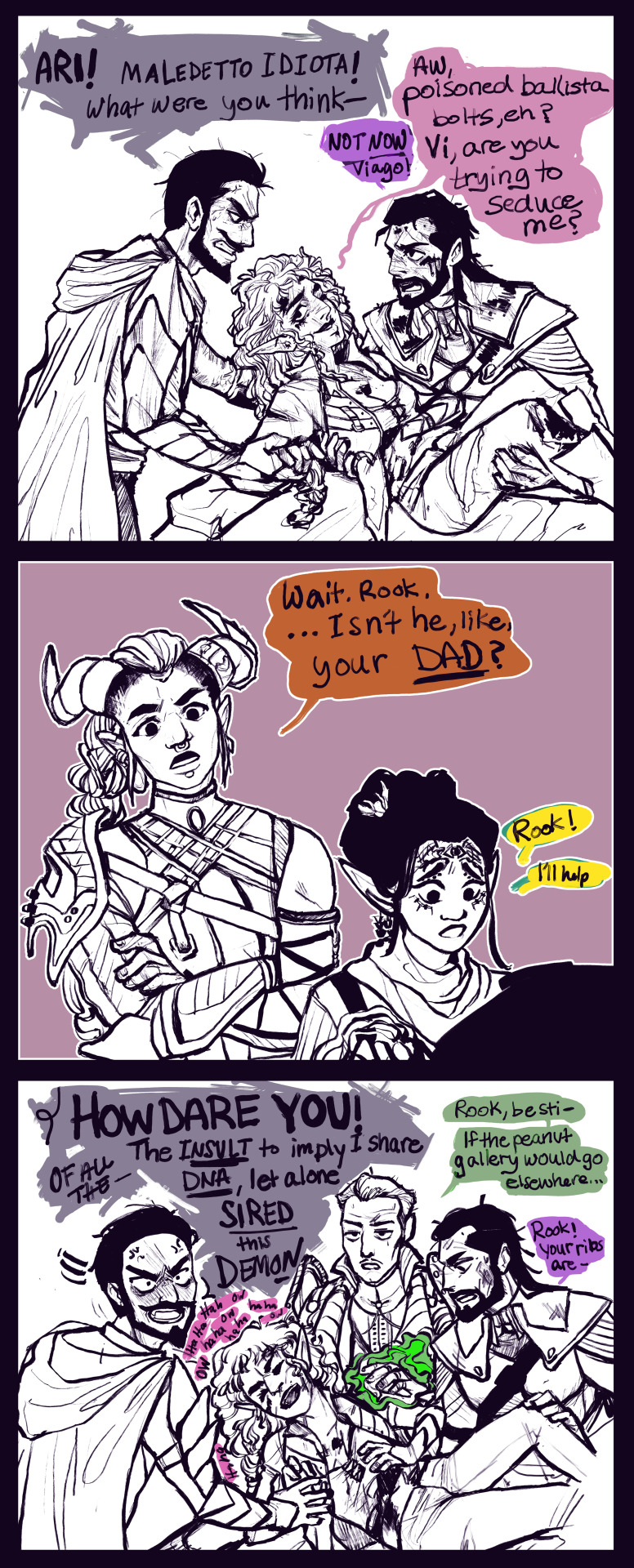
Viago would never allow his child to grow up this dumb, please.
#dragon age: the veilguard#datv spoilers#rook datv#lucanis dellamorte#viago de riva#taash dragon age#bellara lutare#emmrich volkarin#rook de riva#Marisol de Riva#dragon age fanart#comic#idk y'all i just have thoughts for scenes and then start drawing them and then they end up being dumb but sunk cost fallacy yolo#i headcanon Marisol as not being related to Viago just part of his house#sorry the wounds are inconsistent i got tired lmao#Marisol has been a menace to Viago since day one but he unfortunately cares about her
2K notes
·
View notes
Text
flyer by oppositional

#occupation#live music#los angeles#essential#vasculae#how i quit ketamine#sunk cost#maggot preacher#dillon bastan#alina kano#discrete vacation#tofucore#suspirium space
0 notes
Note
Sorry for the advice you didn't ask for, but if you're strugfling with pulls and REALLY can't decide between the two, Grim might not have a rerun (because as far as I remember, his platinum card didn't, but maybe it was because it was a one time thing) and Silver might (I think all the dream cards did?? I can't imagine they wouldn't but who knows.) These aren't good arguments but honestly the main thing is which card you would be MOST upset about missing. Which is probably both, but something I do is pretend like I'm going to take advice from someone. Then when they pick, I change and try to think of whether I'm disappointed or not. And if you can't tell, try the other way and compare the level of disappointment. Sorry if this is confusing and unneeded, I just feel strongly for other ftp people 😭 Of course there's always the option of sacrificing another device's storage to make an an account and wait like a year. lol. I mean atp it's not a bad idea I think?? Anyway I wish you tremendous luck and also transfer all of mine to you 🙏🙏🙏
thank you, I think I did ultimately need to just...sit down and figure out which one my heart was calling to! as the saying goes, flip a coin and you'll know which outcome you want before it lands. 🤷 (I'm pretty sure Blazin' Hot Grim will get a rerun though next year! they were very upfront about Platinum Grim being a one-time only thing for the 100th anniversary, so the fact that they didn't say anything like that this time makes me think we'll get another chance at him eventually!)
anyway it's probably not a surprise to anyone who I ended up going for. but I do now have a very shiny new metallic boy. :)

he waited until the pity mark, because of course he did. which means, uhhh, well.

they really are gonna drop a fluffy bunny Malleus on me next month, aren't they. ᕕ( ᐕ )ᕗ
well, anyway, that's my gacha luck used up for now, so let me pass it on to everyone who's still working on their pulls! whether you're deep in the anniversary/episode 7 finale vortex, or going on a happy little shopping frolic with Vil, BRING THOSE BOYS HOME 🤞🤞
#art#twisted wonderland#twisted wonderland spoilers#twisted wonderland episode 7 spoilers#twisted wonderland book 7 spoilers#twisted wonderland episode 7 part 13 spoilers#twisted wonderland book 7 part 13 spoilers#twst 5th anniversary#joseimuke games are serious business#i promise i'll do other stuff eventually and stop talking about gacha shit#i was getting SO frustrated with it though so i'm glad i did actually get something out of it eventually#(sunk cost fallacy whom)#it always had to be my boy sir silver knight of dreams vanrouge. i feel silly for even thinking there was a decision there.#jk jk i do love teen idol grim and i'm sorry to have to pass on him 😔#(we shall not talk about another year of being denied masquerade malleus)#i figure next month is probably going to be a light one though after. y'know. the absolute juggernaut march has been#so i'm prooooooobably safe...?#like it's probably going to be some more master chef and -- oh no they're going to start dropping the horse boy club aren't they#oh no oh no what have i done
748 notes
·
View notes
Text
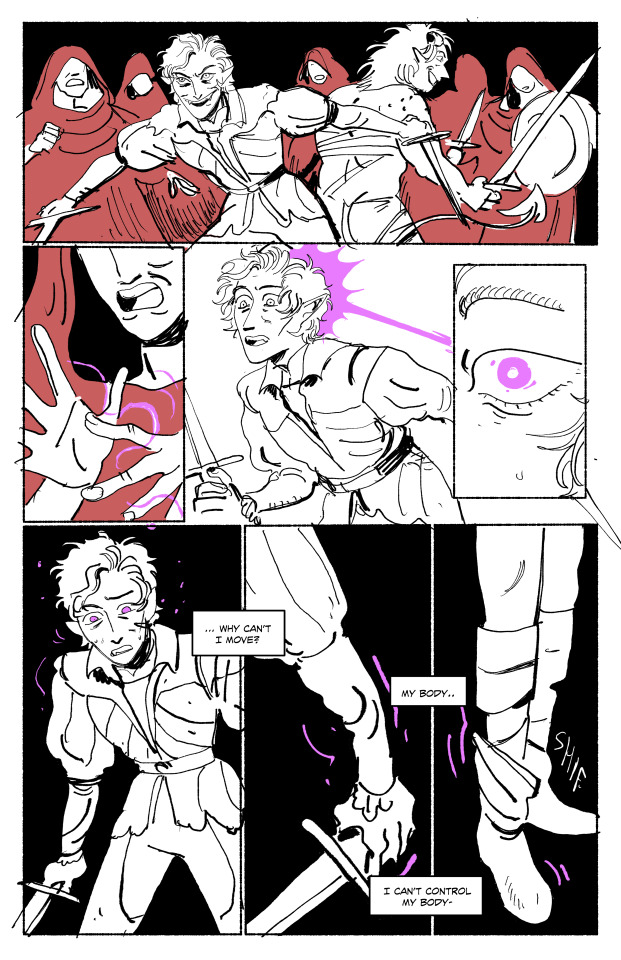



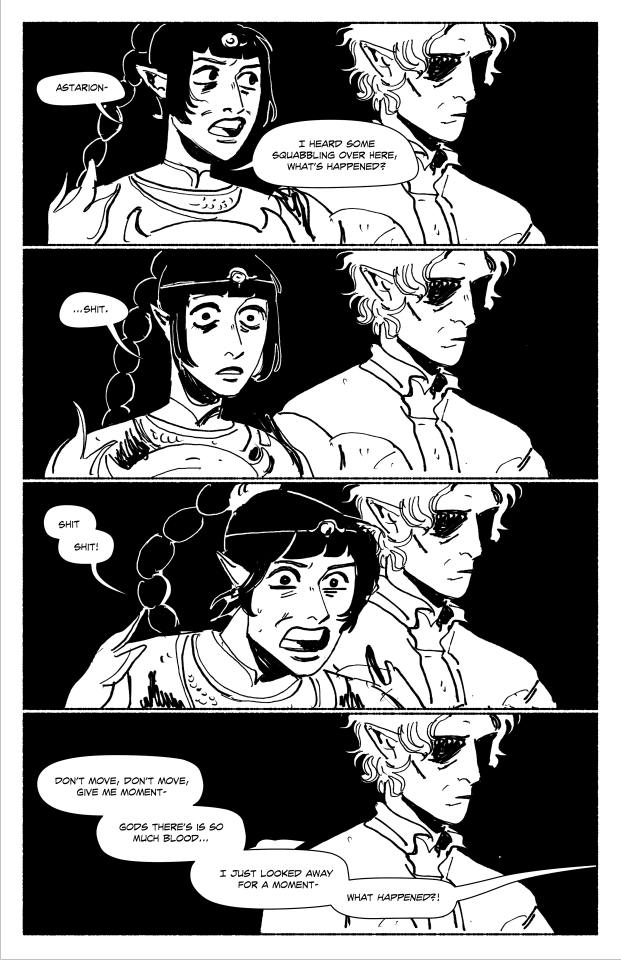
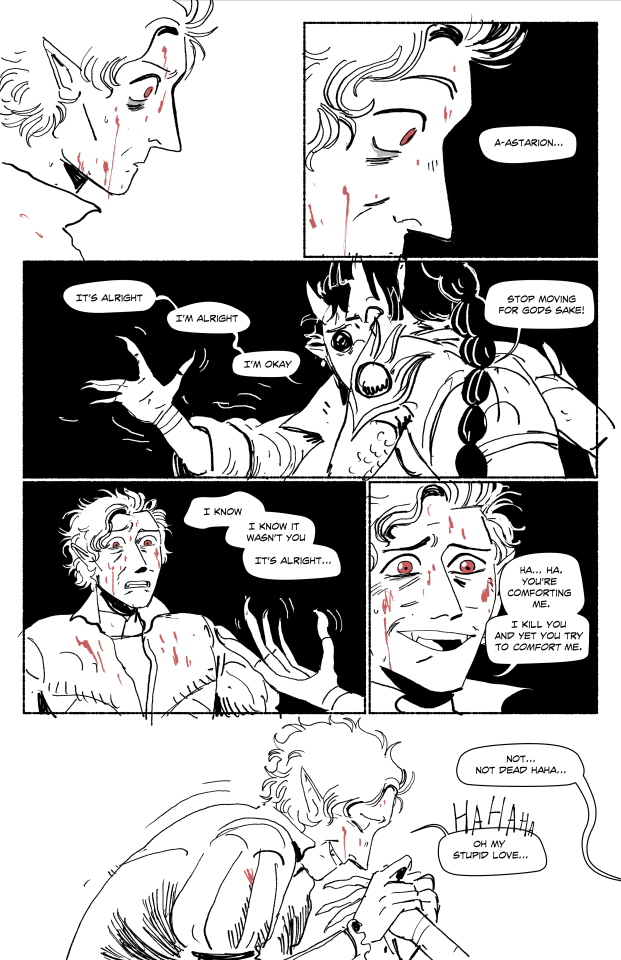
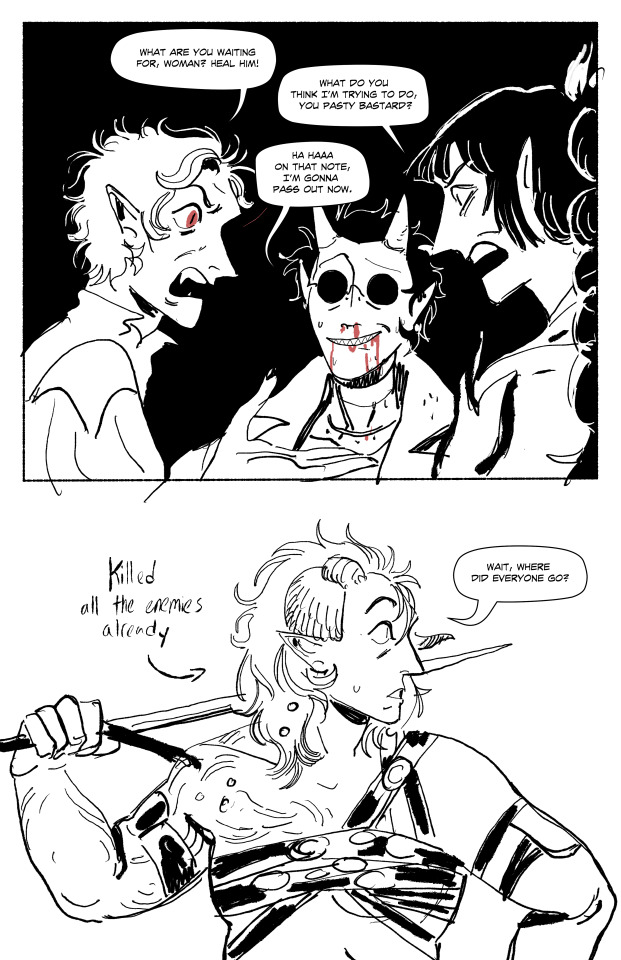
Hey, dominate person is a pretty fucked up spell, ain't it?
#my art#comic#fanart#bg3#lapis#tav#astarion#baldurs gate 3#karlach#shadowheart#im finally free of this comic i've been drawing it for like a month now#sunk cost fallacy babyyy#this is deeply indulgent please dont judge me
8K notes
·
View notes